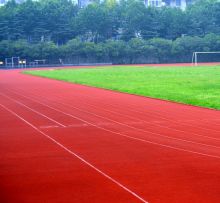Athletics as a sport is all about being the best in a given discipline; who can sprint the quickest, who can run a best distance in the fastest time, who can jump the furthest or who can throw the longest distance.
This is why training strategies such as strength conditioning plays such a huge part, especially to elite athletes who are trying to break world records and win medals. Strength and conditioning coaches will work alongside the athlete’s other coaches to calculate and form a precise training schedule to meet the needs of the sport.
Only the USA have more strength and conditioning coaches per square mile than we do in Britain which shows how important and crucial of a discipline and training method it can be.
Before we look at the impact strength conditioning has on athletes, we must first find out what it actually means. Strength conditioning is the physiological and physical development of performers for elite sports performance. It incorporates more than just trying to lift as heavy a weight as possible; it includes elements such as speed and agility, endurance, core stability and plyometric movements. You may be thinking that for athletic events such as discus, it is all about how far the athlete can throw the discus, however, they need to have the speed and agility to perform the spinning movement efficiently.
When conditioning coaches are creating a plan for elite athletes, they need to be aware of all the components needed in that sport/activity, however the athletes do need to also training on their technique with that specific coach. This is a complex component that a conditioning coach needs to be aware of and plan for.
Like any sport, training for track and field is broken down into a periodised plan which is known as periodisation. The most common and widely recognised structures for periodisation are:
- Marcocycle (yearly plan consisting of pre-season, competition phase transition)
- Mesocycle (2-6 weeks plan)
- Microcycle (a weekly plan)
Due to the nature of track and field being a summer sport, there is a winter indoor season. However, some athletes do not compete during this time and there is a lot of time for the pre-season and transition phases of the macrocycle, where the most effective conditioning can take place.
Conditioning coaches work with all athletes of all sports, but in athletics, the rewards of their work can be more noticeable. However, due to the nature of track and field events, and the amount of time spent in season, this places a higher emphasis on track and field conditioning.










